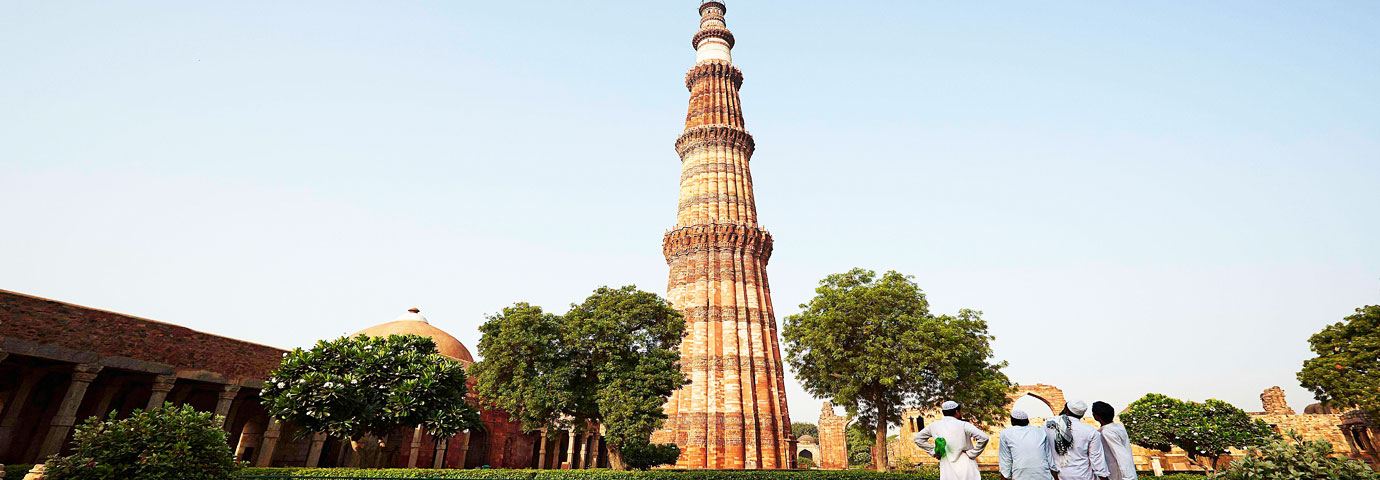History
Like several monuments, the origins of the Qutub Minar is shrouded in controversy. While some believe that it stands as a symbol of victory, others say that it served as a minaret to the muezzins to call the faithful to prayer. However, it's generally accepted that the construction of the minaret was started by Qutab-ud-din Aibak in 1192, the first ruler of the Delhi Sultanate.
An additional three stories were added to the minaret by Aibak's successor and son-in-law, Iltutmish. The topmost story of the minaret is believed to have been destroyed by a lightning in the year 1369, before being rebuilt by Firoz hah Tughlaq, who also added another story.
Architecture
Qutub Minar consists of five stories, and is a fine example of Indo-Islamic architecture. Its pattern also closely resembles the Minaret of Jam in Afghanistan. The minaret reaches 239ft in height, with its base being 47ft while tapering to 9ft at the apex. The tower is adorned with beautiful inscriptions, while the projecting balconies are supported by exquisitely decorated brackets.
The Quwwat-ul-Islam Mosque, which sits at the base of the tower, is believed to be one of the most magnificent in the world, besides being one of the earliest mosques built in Delhi. The entire tower consists of a spiral staircase of 379 steps.
Visit timings
The Qutub Minar is open for visitors from sunrise to sunset, or from 7 a.m. to 5 p.m.
Entry Fee
Indian citizens – Rs. 30/- and for foreign nationals: Rs. 500. Entry is free for children up to 15 years of age.
How to Reach
By Metro – Board from any DMRC station and reach Qutub Minar station. Then follow the rail map to reach the minar.
By Buses – You can either avail the services of a Delhi Transport Corporation (DTC) BUS or the Hop On Hop Off Sightseeing Bus Service offered by Delhi Tourism.


